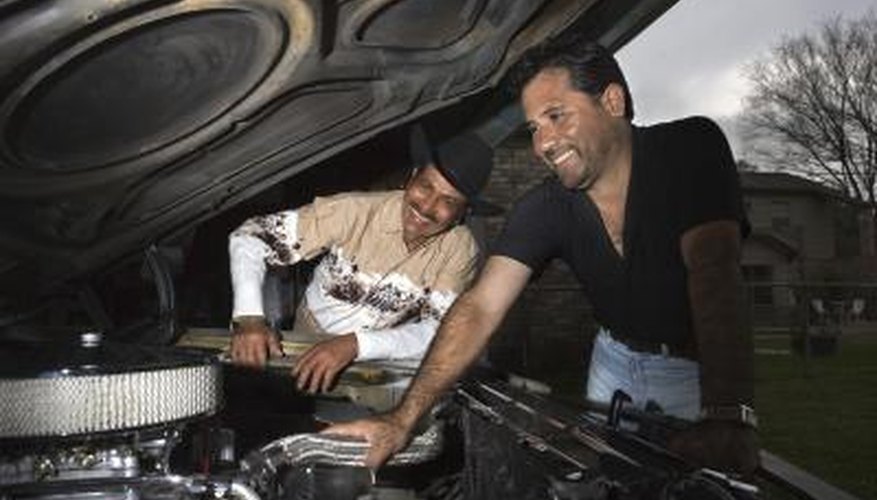The cooling system in your vehicle is of paramount importance to the health of the engine. All aspects of the cooling system, from the fan to the thermostat to the radiator hoses, must be in good operating condition to ensure that the engine does not overheat, which can lead to a costly repair bill. If the fan on your vehicle fails, you can drive it a short distance--and possibly farther--but you should avoid driving the vehicle if at all possible.
Why You Can
The radiator fan on your car draws air in from the grille and over the radiator, where it cools the coolant in the radiator. In the absence of a fan, air still flows in, usually directed by the shroud. But the rate of air flow and the air temperature now depend on what speed the vehicle is travelling. In stop-and-go traffic, the vehicle will not be moving quickly and air flow will be severely restricted. However, on a clear freeway, enough air may flow to the radiator that the car will not run hot at all, even without a fan.
- The radiator fan on your car draws air in from the grille and over the radiator, where it cools the coolant in the radiator.
- However, on a clear freeway, enough air may flow to the radiator that the car will not run hot at all, even without a fan.
Why You Shouldn't
For almost every vehicle, the fan is an extremely important part of the cooling system, particularly when the vehicle is driven slowly or sitting in traffic with the engine idling. Many cars have fans that are attached to the crankshaft or water pump and are constantly turning and providing cool air. Other cars use electric fans controlled by thermostats that tell the fans when to come on. If the fan stops turning, then the car likely will overheat (especially at low speeds or idling), which can cause the head gasket to fail. This would mean an expensive repair bill.
- For almost every vehicle, the fan is an extremely important part of the cooling system, particularly when the vehicle is driven slowly or sitting in traffic with the engine idling.
When You Might Have To
Mechanical fans are driven by belts made of rubber that can dry out and crack over time. If they are not replaced periodically, they can break and stop turning the fans. An electric fan can fail from a blown fuse, wiring problem or if the motor in the fan fails. If this happens, the vehicle will need to be towed or possibly driven a short distance to a shop where it can be repaired.
- Mechanical fans are driven by belts made of rubber that can dry out and crack over time.
- An electric fan can fail from a blown fuse, wiring problem or if the motor in the fan fails.
How To Do It
If you absolutely must drive a car without a fan, go at a higher speed and at a constant rate of speed to keep the air flowing through the grille and onto the radiator. If possible drive on the freeway and keep the gearbox in the highest gear possible to keep the engine RPMs as low as possible, which will reduce heat produced by the engine. Closely monitor the temperature gauge to make sure the engine is not overheating. If it begins to overheat, turn off the engine immediately.
- If you absolutely must drive a car without a fan, go at a higher speed and at a constant rate of speed to keep the air flowing through the grille and onto the radiator.
- If possible drive on the freeway and keep the gearbox in the highest gear possible to keep the engine RPMs as low as possible, which will reduce heat produced by the engine.
How To Make Sure You Don't Have To
To minimise the chance your vehicle fan will fail, periodically inspect and adjust the fan belt on a car with a belt-driven fan. If the belt is old and appears dry and cracked, replace it with a new fan belt. On a car with an electric fan, make sure the wiring is in good shape and keep extra fuses (and a relay if the fan uses one) in the car in case the fuse or relay fails while you are driving.
